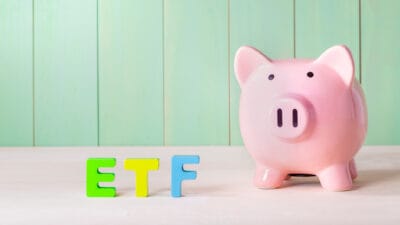The COVID stock market crash of 2020 was a watershed moment for ASX shares and the share market. In just over three weeks, ASX investors watched the S&P/ASX 300 Index (ASX: XKO) experience its biggest fall since the global financial crisis of 2007-2008. And that one took 18 months to get from the top to the bottom. But let's talk about the Vanguard Australian Shares Index ETF (ASX: VAS).
This exchange-traded fund (ETF) from Vanguard is a quintessential index fund. That means that this ETF closely reflects the movements of the index that it tacks at all times. In this case, the index in question is the ASX 300.
Put another way, you can expect his ETF to behave almost exactly in line with the ASX 300.
So let's cast our minds back (if we dare) to early 2020. COVID was raging and the world was full to the brim with uncertainty. If there's one thing investors hate above all else, it is uncertainty. As such, the crash that we saw across February and March of 2020 wasn't exactly unexpected in hindsight.
Between 21 February and 24 March 2020, the ASX 300 Index went from 7,115 points all the way down to 4,500. That was a precipitous drop of 36.75%.
Lo and behold, we saw something very similar occur with VAS units. On 20 February, the ETF closed at $90.55. But by 23 March, the fund was down to $58.35 a unit, a fall of 35.56%:
Now picking the bottom of a market crash is a very difficult needle to thread. Most of us would probably do better if we avoided attempting such a difficult task. But let's say, for argument's sake, that an investor managed to time the bottom of this COVID crash perfectly and invested $5,000 into Vanguard Australian Shares ETF units on 23 March.
How much has the Vanguard Australian Shares ETF given back to ASX investors?
So assuming a buy price of $58.35 per unit, this investor would have been able to bag 85 Vanguard Australian Shares ETF units, with around $40 left over for brokerage costs. On the ASX today, VAS units have just closed at $90.60 each. That's worth a capital gain of 55.27% over the past three-and-a-bit years alone, and would give our investor's 85 units a value of $7,701 today.
But then there are also dividend distributions to consider. Like most ASX index funds, the Vanguard Australian Shares ETF pays out a distribution every quarter to investors.
So between 23 March and today, this ETF has forked out nine dividend distributions, worth a collective (and approximate) $10.36 per unit. Since we have 85 VAS units, our investor would have also received a rough total of $880.60 in dividend income as well. That stretches our gain to $3,581.60, and our total lump sum to $8,581.60, or a gain of 71.63%.
Not a bad return for just over three years of waiting.








